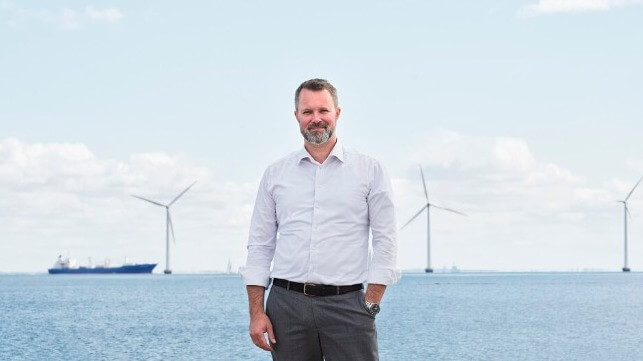Interview: StormGeo CEO Søren Andersen on Optimizing Vessel Efficiency

For the shipping industry to achieve its long-term CO2 emissions goals, many changes and improvements will be needed, including increased efficiency. Fuel economy is key, and it will only become more important with the next generation of zero-carbon fuels, which are expected to be even more expensive than today's $900-per-tonne bunkers. Weather routing is an important tool for ship managers to improve fuel efficiency, and it can boost safety and reduce risk at the same time. To learn more about the advantages of modern "big data" weather platforms and sophisticated vessel-efficiency tools, The Maritime Executive recently spoke with Søren Andersen, CEO of StormGeo.
TME: Can you tell us how StormGeo's services help shipping and the environment?
It starts with the weather for us. By forecasting the weather accurately, we help companies keep their people and their assets safe. With climate change, weather becomes more extreme, and with extreme weather comes risk and disruption to business. Many companies - including large Fortune 500 companies with extensive operations - use our services to monitor their activities and give weather risk warnings. This includes weather routing for vessel operators, advising them to speed up or slow down to reduce weather risk.
Safety is number one, but getting it right also means that your ship is a lot more efficient, so you don't spend as much on fuel on the voyage. That reduces CO2 emissions, and that's good for the oceans and certainly it's good for the climate.
TME: How does this work in practice?
We've been doing this for many years, so we have a huge library of data on different vessels and how they behave in different conditions. We monitor 70,000 voyages every year, and that generates a lot of data. With that data, we're able to come up with recommendations.
For example, to maximize fuel efficiency, you actually need to run at constant power - not constant speed. And by predicting the weather and knowing the vessel, we can tell the operator, "this is the power you apply to arrive on time." This means that the ship is going to go faster sometimes and slower at other times, but it will get there on schedule, and it will use less fuel.
You can only do that if you have a lot of knowledge about the ships, which we have, and you need to be pretty good at weather forecasting, which we are. It's not an exact science, but we are benchmarked by oil majors on a yearly basis and we can see that we are among the best at it.
TME: How does your platform work for shipmanagers and crewmembers day-to-day?
For the operator on shore, our dashboard shows where all the ships in the fleet are located, whether there are any concerns about how the ship is performing when compared to other vessels or instructions for speed and consumption and whether there is anything the crew can do differently to improve performance.
On board, the captain has access to our route planning tool and our weather service. All of that is in one platform with one set of data and one set of algorithms, so when the captain and the operations manager on shore discuss weather, they can discuss it on the same terms. After all, if you don't have the same starting point with the same information, you don't get into solution mode.
We want to make the workflow as easy as possible for the captain and the crew, so we've also included tools for updating electronic charts and publications inside of our platform. There is a small shopping cart icon up in the corner of the screen, and you press on it and it shows you which charts you need. You can then purchase them, download them and activate them on the vessel.
Eventually, we would also like to integrate equipment monitoring, parts and service tracking into our platform so that the operator can also manage maintenance tasks in the same place.
I think in the end, we'll see a few platforms dominating the industry with economies of scale, with many different suppliers feeding into them. And we want to be one of those platforms.
TME: Can you tell us about your new CII dashboard, and what makes it different?
I think we may be underestimating what the CII is going to do is for the industry - not just in terms of asset values for different ships, but also for the relationship between charter and owner. Maybe the owner will want to make sure that the charterer operates the ship in a way that will improve the CII rating. We're only just getting started on that and it will be exciting to see what it brings.
What we offer is basically a tool where you can very easily calculate CII impact with high accuracy, and then forecast what the CII would be on a future voyage. And of course you can then consolidate those voyages and do your reporting.
With CII regulations coming in 2023, I think the dashboard was a timely product launch. When we launched, we had a lot of very big names calling us up quickly and asking us to come over and show how it works. That demonstrates how much attention the shipping industry is putting on this.
TME: Are there other strengths you'd like to highlight?
Last year we were bought by Alfa Laval, which is a large industrial group with about $5 billion a year in revenues. That means that we have resources and staying power, and we're going to be around and continuously investing in our products for years to come. After all, when you train your staff on one system, you don't want to have to expend the time and effort of switching them to another one because the supplier is no longer there.
